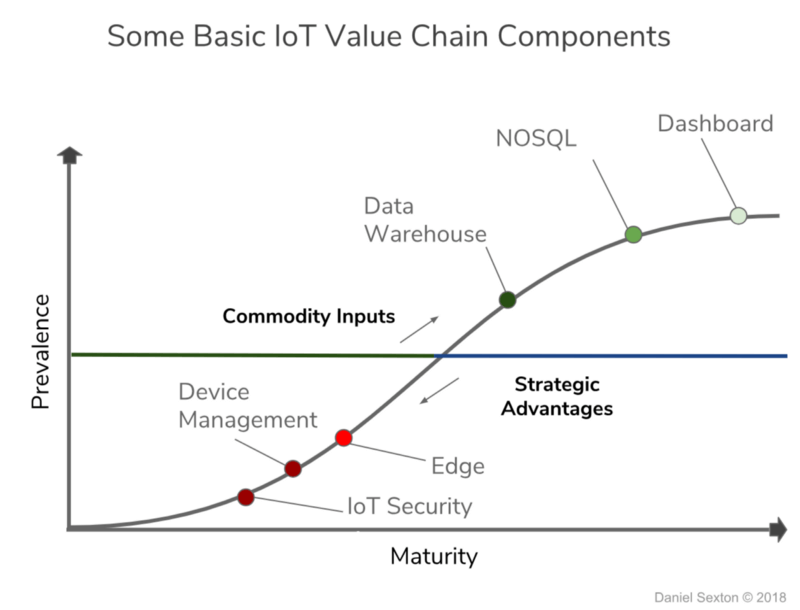We take a read through an article by Daniel Sexton (a Tech Intrapreneur) on what he has learned about IoT platforms and how to categorize them.
What Is an IoT Platform?
IoT is much more expansive than what most of us think of as the traditional Internet. It is growing faster too. There are more devices, protocols, security concerns, RF frequencies, architectural components, services, data, and related products. IoT is massive and broad.
As such, the term ‘IoT Platform’ is really too broad to be useful to most people. I outline an example IoT platform below, but, in some regards, the concept of an ‘IoT Platform’ is about as meaningful as an ‘Internet Platform’ circa 2004. In fact, IoT has a lot more moving parts.

One of the most challenging parts of many IoT projects is managing the hardware devices. This primarily means safely provisioning, maintaining and updating sensors and edge devices. Accordingly, much of the IoT literature (and many new products and startups) is centered around the communication between cloud-based UIs, edge devices, and sensors — MQTT, security keys, OTA firmware updates, RF frequencies, et al.
Consider the value chain chart below I created which shows where some common IoT technical components fall on their life cycles. Components on the lower left of this graph are changing so rapidly it is hard for IoT platforms to manage them consistently.

One of the most important jobs for an IoT platform is to make it easy to provision, update, and manage lots of devices and to keep everything secure. As you will see, platforms have a long way to go in this regard and the reason lies in where these activities fall on their life cycles.
Once the data makes it past the edge and into the cloud, however, IoT projects become more familiar (in theory; more about this in a minute). Data flows to an API endpoint and is stored in the cloud (typically). So a platform should help stream and load potentially massive amounts of data into a data store and facilitate the retrieval of this data. Since AI and machine learning can be important to IoT solutions, platforms should also implement algorithms wherever they are needed (edge, cloud, device, client). Finally, creating and managing dashboards or ‘Single Panes of Glass’ can be an important part of an IoT project. Platforms should help connect dashboards to data.
There are many other components and activities too but those are some common ones.
Who should buy an IoT Platform?
It is still early for IoT platforms. For example, there are no Industrial IoT platforms in the Gartner Magic Quadrant yet. And according to Gartner’s Hype Cycle for Emerging Technologies, IoT platforms have just passed over the Peak of Inflated Expectations and are careening towards the Trough of Disillusionment.
As bad as that sounds, now is actually the best time to select your IoT Platform if you are thinking strategically and want to gain a competitive advantage. Otherwise, it’s the worst time. Entering a highly fragmented and confusing market with inflated expectations and no strategy does not bode well.
In other words, if you are an early adopter, proceed with care but don’t expect an IoT platform to do much on its own without a lot of time and effort. If you’re a laggard, by the time you’re reading this, you can just ask your Amazon Robot to build your platform for you.
IoT Platforms As Partners, Not Assets
Some executives I have worked with intentionally treat third-party software as a black box and ignore the components that comprise it. The software is treated as a financial asset, such as a truck or a warehouse, that has a cost, utility, depreciation or operational expense, and can be readily replaced with a quantifiable amount of money, time and internal resources. In my experience, this approach can work well for commoditized software solutions, such as HR, sales, and accounting systems, but it is not the best way to approach IoT platforms right now. Emerging technologies, such as IoT platforms, should be treated more like strategic partnerships.